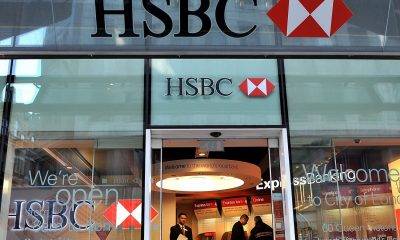

Finance
Are investors too complacent about interest rate risk?
Bill Eigen, chief investment officer, Absolute Return and Opportunistic Fixed Income, JP Morgan Asset Management gives his contrarian view.
One of my colleagues in equities likes to say history teaches investors that what you pay for an asset class is a defining feature of your return. Buy it cheap and you tend to get an above average long-term return. Bond investors would do well to take note.
Lulled into complacency by the “central bank put,” they seem to think nothing of the extraordinarily expensive bond levels and, critically, the interest rate risk inherent in these overpriced securities. Bond investors aren’t being compensated for the significant risks they may unknowingly be taking on.
Traditional fixed income investors, holding disproportionate levels of interest rate risk, may be sleepwalking into the potential for principal losses by unknowingly conflating ‘safety’ and ‘quality.’ There’s an enduring view that higher quality bonds continue to function as a suitable source of risk mitigation, diversification and portfolio stability. This misconception has been conditioned by years of artificially elongated global yield compression. In actuality, the margins of safety in higher quality bonds are razor-thin.
The complacency is easy to understand. Investors have long grown accustomed to living in a world of price-insensitive buyers of fixed income, as central banks have stood ready to hoover up bond supply and, as a result, bolstered sovereign debt prices to all-time highs. But with the US Federal Reserve in tightening mode and central banks globally reassessing their strategies, it would seem precarious at this point in the cycle for investors to peg their strategy on the assumption that these securities will remain forever supported.
With the fundamentals having been skewed by central bank intervention over the last few years, high quality, interest-rate driven assets have more or less retained their ‘risk free’ status even as their valuations have grown increasingly detached from reality. Yet just a .5% increase in UK interest rates would inflict approximately a -9% total return loss on 10+ year duration UK gilts. The only cushion that can soften the blow is the bond coupon, which is more or less non-existent.
Investors who believe traditional fixed income can still be a portfolio anchor need to acknowledge they are in a world where safety has come to have multiple faces. A more absolute return oriented fixed income investment approach makes more sense, characterised by the flexibility to be tactical and selective in exposure to interest rate risk and in pursuit of less correlated sources of returns. When necessary, such an approach can focus on taking targeted, and well-compensated, risks in lower quality parts of the bond market when the alignment of fundamentals, valuations and technicals warrants.
For about 18 months until just a couple of months ago there were attractive opportunities in high yield debt, with riskier and lower-rated parts of that market more attractively priced than their higher rated counterparts. That view is rapidly evolving into one of risk-aversion and as I write this, following a strong run in the high yield markets, we are actively trimming our exposure.
Investors looking to hoover up minimal returns from buying fixed income securities at these prices, heedless of the interest rate risk they are bearing, might as well be picking up nickels in front of a steam roller. With nearly everything across the spectrum from interest rate-driven securities to various parts of the credit market priced for perfection, the balance of risks for bondholders has shifted. The higher bond prices go, the greater the risk that even marginal increases in inflation or interest rates will translate into investors losing money in securities priced with absolutely no margin for error.
Bond investors would do well to recall the importance of valuations in driving long-term total returns and prioritise compensation for the level of risk taken on. Today’s environment calls for a discerning, selective approach to taking risk and underscores the importance of maintaining optionality in the form of cash holdings that can be deployed opportunistically during volatile periods in a market lacking strategic liquidity providers like the significantly diminished broker/dealer community.
Most importantly, investors need to remember that the appearance of quality doesn’t equal safety of assured returns. After all, what matters is not what you are buying but how much you are buying it for. It’s not personal, it’s just price.















